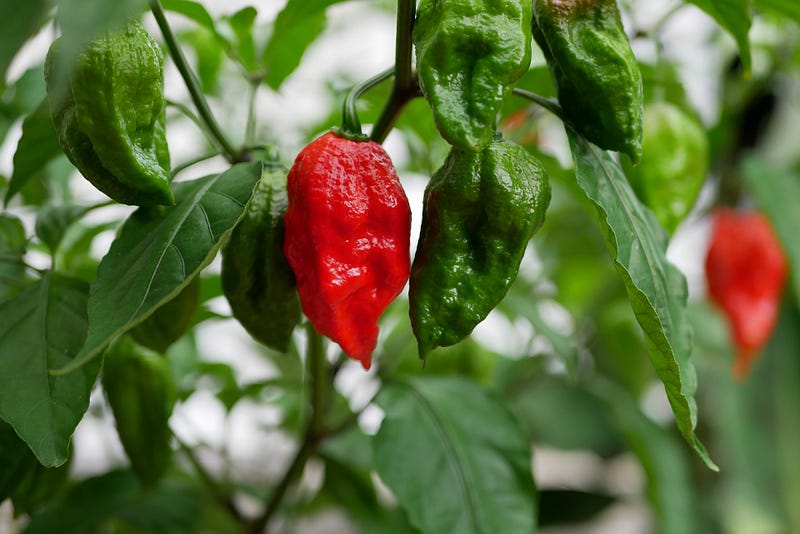Can You Take the Heat?
The Science Behind the Scoville Scale
By Alisha Karuvannur-Sandhu, Behavioral Neuroscience & Philosophy, 2023

The title of “World’s Hottest Pepper” has switched around for years, ever since the so-called “arms race” to grow the spiciest pepper began in the nineties. First it was the Bhut jolokia, or “ghost pepper,” then the Naga Viper, then the Trinidad Scorpion. Today, the Carolina Reaper takes the crown, with the hottest one recorded measuring in at an astronomical 2.2 million Scoville Heat Units (SHU). But how exactly is this measurement calculated?
The original Scoville scale, developed by American pharmacist Wilbur Scoville in 1912, was a highly subjective measure of spiciness. Known then as The Scoville Organoleptic Heat Test, the procedure relied on human taste buds to calculate level of heat. First, a sample of dried pepper is dissolved in alcohol to extract the capsaicinoids (the chemical compounds responsible for inducing the sensation of heat). Then, the extract is diluted and taste-tested by a panel until the majority are unable to detect the spice. Based on the level of dilution needed to mask the spice, the results can then be converted into SHU. Of course, such a subjective test poses some glaring shortcomings — sensory fatigue and variation in heat sensitivity between tasters evidently lead to imprecise results.
Of course, such a subjective test poses some glaring shortcomings — sensory fatigue and variation in heat sensitivity between tasters evidently lead to imprecise results.
Today, heat is still measured in SHU; however, the methodology to determine this spice level has greatly transformed. Scientists currently use a procedure called high-performance liquid chromatography (HPLC) to quantify levels of the various capsaicinoids within a pepper. The process involves pumping a pressurized solvent containing the dried pepper through a column of solid adsorbent material. The different components of the sample will have different flow rates, allowing the column to separate them in order to be quantified. The parts-per-million measurement of capsaicinoids can then be converted into SHU. This method of measuring heat is both more efficient and more accurate than the original test.
Beyond the mere quantification of capsaicinoids, there are still numerous other factors, from how long heat sensation persists to where it is felt, that affect our perception of spice. Nevertheless, as new species of peppers continue to be bred, HPLC has provided a useful tool to compare them.
